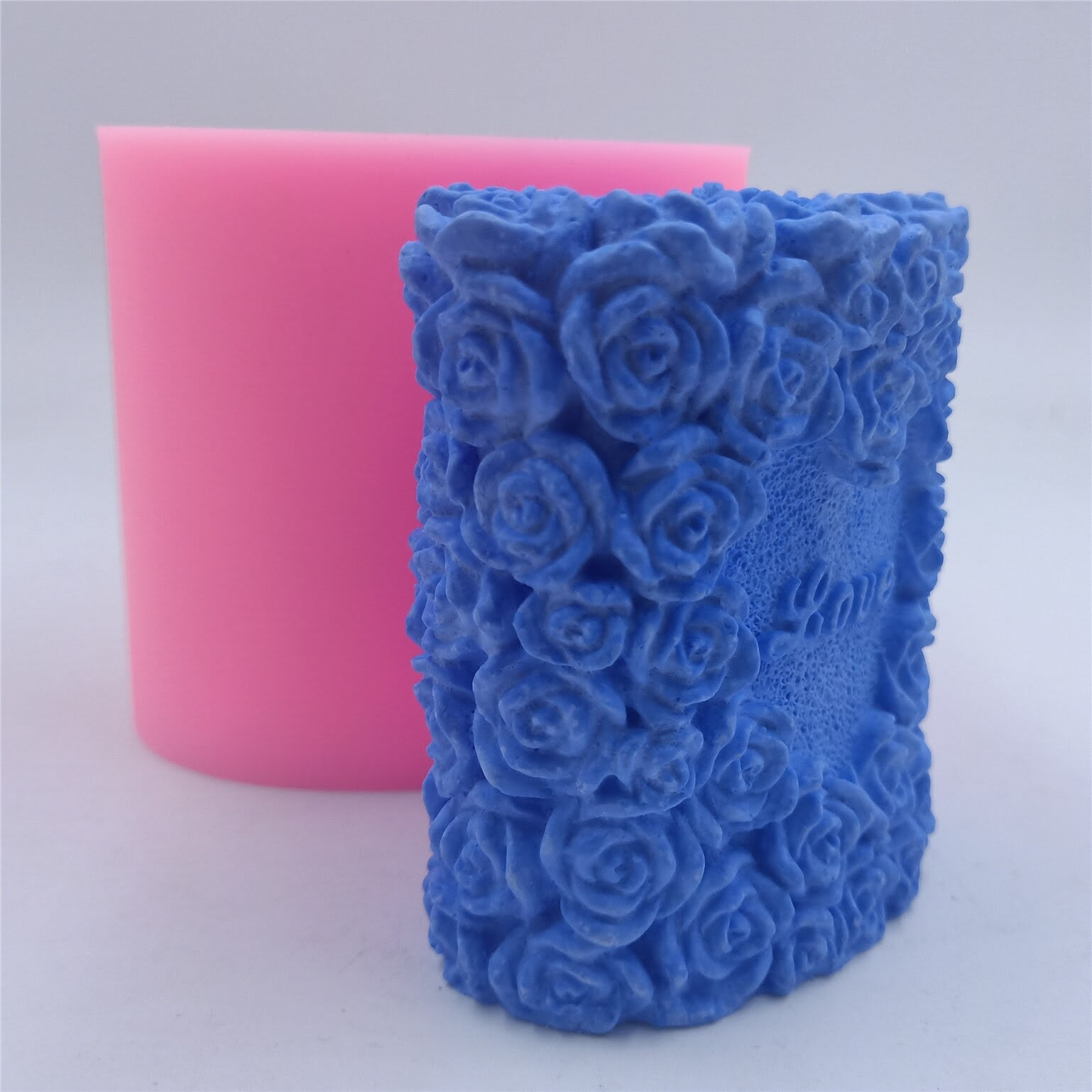Making homemade soy candles is a rewarding and relaxing hobby that allows you to create personalized, eco-friendly candles for your home or to give as gifts. Soy wax has gained popularity in recent years for its clean-burning properties and sustainability, making it an excellent choice for candle making.
In this section, we will delve into the history and benefits of using soy wax for candle making, providing you with the knowledge and inspiration to embark on your own candle making journey.
Soy wax has been used for candle making since the 1990s and has become a preferred alternative to paraffin wax due to its renewable nature and minimal impact on the environment. It is derived from soybean oil, making it biodegradable and easy to clean up if spilled. Additionally, soy candles are known for their long-lasting burn time and ability to hold fragrance exceptionally well, resulting in a delightful aroma that fills the room.
One of the key advantages of using soy wax for candle making is its clean-burning nature. Unlike paraffin wax, which can release harmful toxins when burned, soy wax produces minimal soot and does not release harmful chemicals into the air. This makes it a healthier option for both you and the environment. Furthermore, soy candles tend to have a longer-lasting fragrance compared to other types of candles, providing a pleasant scent without overwhelming artificial fragrances.
Choosing the Right Supplies
When it comes to making homemade soy candles, having the right supplies is essential for a successful and enjoyable candle making experience. Here is a detailed list of the essential materials needed for making homemade soy candles:
- Soy Wax: The key ingredient for making soy candles, soy wax is a natural, renewable resource that burns cleaner and longer than traditional paraffin wax.
- Wicks: Choose wicks specifically designed for use with soy wax to ensure proper burning and minimize soot. Wicks come in various sizes and types, such as pre-tabbed wicks or cotton wicks with a proper size for the container being used.
- Fragrance Oils: To add delightful scents to your homemade soy candles, opt for high-quality fragrance oils specifically formulated for candle making. From floral and fruity to woody and seasonal scents, there are endless options to customize your candles.
- Containers: Select heat-resistant glass jars or tins to pour your melted soy wax into. Make sure the containers are clean, dry, and suitable for holding hot liquids. You can also repurpose old glass jars or mason jars for a sustainable touch.
In addition to these primary materials, you may also need tools such as a double boiler or melting pot for melting the wax, a thermometer to monitor the temperature of the melted wax, and a stir stick for mixing in fragrance oils. It’s important to ensure that all supplies are clean and free from any debris before starting the candle making process.
Now that you have all the necessary supplies at hand, you’re ready to start creating beautiful homemade soy candles right in the comfort of your own home.
Unquestionably following these steps will make very easy jumping this candle-making adventure.
Step-by-Step Guide to Candle Making
To create your own homemade soy candles, follow this step-by-step guide to ensure a successful and enjoyable candle making experience.
1. Prepare Your Workspace: Set up a clean and clutter-free area for candle making. Cover the surface with newspaper or a protective layer to catch any spills and drips. Ensure good ventilation in the room as melting wax and fragrance oils can produce strong odors.
2. Melting the Soy Wax: Begin by measuring the amount of soy wax needed for your desired number of candles and melting it in a double boiler or a dedicated wax melting pitcher. Heat the wax to the recommended temperature according to the manufacturer’s instructions, stirring occasionally to aid the melting process.
3. Adding Fragrance Oils: Once the soy wax is fully melted, carefully add your chosen fragrance oils, following the recommended ratio for safe and effective scent dispersion. Stir gently but thoroughly to ensure an even distribution of the fragrance throughout the wax.
4. Preparing Containers and Wicks: While waiting for the scented wax to cool slightly, prepare your candle containers by securing wicks in the center using wick holders or adhesive tabs. Make sure to position them upright so that they remain centered when pouring in the wax.
5. Pouring Into Molds: With all preparations complete, carefully pour the scented soy wax into your chosen containers, taking care not to spill or overfill. If you wish to create layered or multicolored candles, ensure each layer has cooled and solidified before adding additional poured layers.
By following these simple steps for making homemade soy candles, you can create beautifully scented and personalized candles for yourself or as thoughtful gifts for friends and family.
Customizing Your Candles
Customizing your homemade soy candles is a delightful and creative process that allows you to add a personal touch to your creations. There are numerous ways to customize your candles, from choosing unique container designs to experimenting with different colors and scents.
One popular method for adding a touch of elegance to soy candles is the incorporation of botanical elements, such as dried flowers or herbs, into the wax. These natural additions not only enhance the visual appeal of the candle but also infuse it with a subtle, natural fragrance when burned.
When it comes to color customization, the options are endless. You can use liquid candle dye or color blocks specifically designed for wax to achieve vibrant or pastel hues. Layering different colored waxes or creating marbled effects can result in stunning and eye-catching candles.
Additionally, scent customization allows you to tailor your candles to suit specific occasions or moods. Whether you prefer soothing lavender for relaxation or invigorating citrus for an energy boost, there is a wide range of fragrance oils available for making homemade soy candles.
One of the most enjoyable aspects of making homemade soy candles is experimenting with various techniques and combinations to create unique and one-of-a-kind designs. Whether you are a beginner or an experienced candle maker, there is always room for creativity and exploration in this craft.
| Customization Element | Possibilities |
|---|---|
| Botanical Additions | Dried flowers, herbs, citrus peels |
| Color Customization | Liquid candle dye, color blocks |
| Scent Customization | Fragrance oils in various scents |
Safety Precautions
When it comes to making homemade soy candles, safety should always be a top priority. Working with hot wax and fragrance oils can pose some risks, but with the right precautions, you can enjoy a safe and enjoyable candle making experience. Here are some important safety measures to consider when working with these materials.
Proper Ventilation
One of the most important safety measures when making homemade soy candles is to ensure proper ventilation in your workspace. This is especially crucial when melting the soy wax and adding fragrance oils, as the fumes produced can be harmful if inhaled in large quantities. It’s best to work in a well-ventilated area or use a fume hood to minimize exposure to these fumes.
Protective Gear
Another essential safety measure is to wear protective gear, such as heat-resistant gloves and safety goggles, when handling hot wax and fragrance oils. This will help protect your skin and eyes from burns or irritation caused by accidental contact with these materials. Additionally, wearing an apron or old clothing can help prevent your clothes from getting stained by the wax or oils.
Fire Safety
Working with hot wax and open flames also requires careful attention to fire safety. Always have a fire extinguisher nearby and never leave melting wax unattended on heat sources. Keep any flammable materials away from the work area and never pour water on a wax fire – instead, use baking soda to smother the flames. By following these fire safety measures, you can minimize the risk of accidents during the candle making process.
Incorporating these safety measures into your process of making homemade soy candles will not only protect you from potential harm but also ensure that your candle making experience is both safe and enjoyable. Taking the time to set up a safe workspace and using proper protective gear will allow you to focus on creating beautiful candles without worry.
Curing and Storage
Understanding the Curing Process
After making homemade soy candles, it’s important to allow them to cure properly before using or selling them. Curing refers to the process of letting the candles sit and harden completely after they have been poured and set.
This step is crucial for ensuring that the candles achieve their optimal burn quality and fragrance throw. During the curing process, the molecular structure of the soy wax stabilizes, allowing for a cleaner and more even burn when the candle is lit.
Best Practices for Curing
To achieve the best results, it’s recommended to let homemade soy candles cure for at least 7-10 days. However, some candle makers prefer to let their candles cure for even longer periods, such as 2-4 weeks, to ensure maximum fragrance throw and burn performance.
During this time, it’s important to store the candles in a cool, dry place away from direct sunlight and heat sources. This allows the candles to harden evenly and prevents any potential discoloration or warping of the wax.
Proper Storage Tips
Once your homemade soy candles have fully cured, proper storage is essential for maintaining their quality. It’s best to store them in airtight containers or plastic bags to prevent dust and dirt from accumulating on the surface of the candles. Additionally, keeping them in a cool environment will help preserve their scent and texture over time.
Avoid storing soy candles in areas with extreme temperatures or humidity, as this can affect their burn quality and appearance. By following these curing and storage practices, you can ensure that your homemade soy candles maintain their fragrance and performance for an extended period of time.
By taking the time to properly cure and store your homemade soy candles, you can enhance their overall quality and enjoy long-lasting benefits from your candle making efforts.
Troubleshooting Common Issues
Making homemade soy candles can be a fun and rewarding hobby, but it’s not without its challenges. As you venture into the world of candle making, it’s important to be aware of common issues that may arise during the process. One such issue is frosting, which appears as a white, powdery residue on the surface of the candle.
This can occur when the wax cools too quickly or when there are temperature fluctuations during the cooling process. To prevent frosting, it’s important to monitor the temperature of the wax and avoid sudden changes in temperature.
Uneven burning is another common problem that candle makers encounter. This occurs when the candle burns down the center, leaving behind a tunnel of unmelted wax along the edges.
Uneven burning can be caused by using the wrong size wick for the diameter of the candle, or by drafts that disrupt the flame. To address this issue, it’s essential to select the appropriate wick size for your candles and to place them in draft-free areas while they are burning.
In addition to frosting and uneven burning, other issues such as scent throw and container adhesion may also affect your homemade soy candles. By learning how to troubleshoot these common problems and implementing preventive measures, you can improve your candle making skills and create high-quality products that burn evenly and release a long-lasting fragrance.
| Common Candle Issues | Troubleshooting Tips |
|---|---|
| Frosting | Monitor wax temperature and avoid sudden changes in temperature. |
| Uneven Burning | Select appropriate wick size and keep candles away from drafts. |
| Scent Throw | Use high-quality fragrance oils and experiment with different scent concentrations. |
Benefits of Homemade Soy Candles
In conclusion, making homemade soy candles can be a fulfilling and rewarding experience. Not only do you have the satisfaction of creating something with your own hands, but you also reap the benefits of using environmentally-friendly and health-conscious materials.
By choosing soy wax over traditional paraffin wax, you can enjoy a clean burn that doesn’t release harmful toxins into the air, making it safer for both your health and the environment. Additionally, the long-lasting fragrance of soy candles adds an extra element of enjoyment to your home or as a thoughtful gift for loved ones.
When it comes to customizing your homemade soy candles, the options are endless. Whether you want to add unique designs, colors, or scents, there are plenty of creative possibilities to explore.
From layering different colored waxes to incorporating dried flowers or herbs into your candles, you can truly make each candle a personalized work of art. The step-by-step guide provided in this article will help you navigate through the candle-making process seamlessly and give you the confidence to experiment with different techniques.
It’s crucial to remember the safety precautions when making homemade soy candles. Working with hot wax and fragrance oils requires careful attention to prevent accidents and ensure a safe and enjoyable candle-making experience.
By following the tips outlined in this article and being mindful of potential hazards, you can create beautiful soy candles while prioritizing safety. Overall, making homemade soy candles is not only a fun and creative hobby but also a way to promote sustainability and well-being in your home.
Frequently Asked Questions
How Do You Make Soy Candles for Beginners?
Making soy candles for beginners is a relatively straightforward process. First, gather all the necessary materials such as soy wax, fragrance oils, wicks, and containers.
Then, melt the soy wax, add the fragrance oil, and carefully pour it into the containers with the wicks in place. Allow the candles to cool and solidify before trimming the wick and enjoying your homemade soy candles.
What Are the Best Oils to Use When Making Soy Candles?
The best oils to use when making soy candles are those specifically designed for candle-making. Some popular options include essential oils like lavender, vanilla, or citrus scents. It’s important to use high-quality oils that are safe for burning and will create a pleasant aroma when the candle is lit.
What Are the Negatives for Using Soy Wax to Make Candles?
While there are many benefits to using soy wax for candle-making, there are also some drawbacks to consider. One negative aspect of using soy wax is that it can be more expensive than other types of wax.
Additionally, soy candles may not have as strong of a scent throw as paraffin wax candles, which could be a downside for those looking for highly fragrant candles. Finally, soy wax can be softer than other waxes, making it more prone to dents and scratches on the surface of the finished candle.

Welcome to my candle making blog! In this blog, I will be sharing my tips and tricks for making candles. I will also be sharing some of my favorite recipes.





